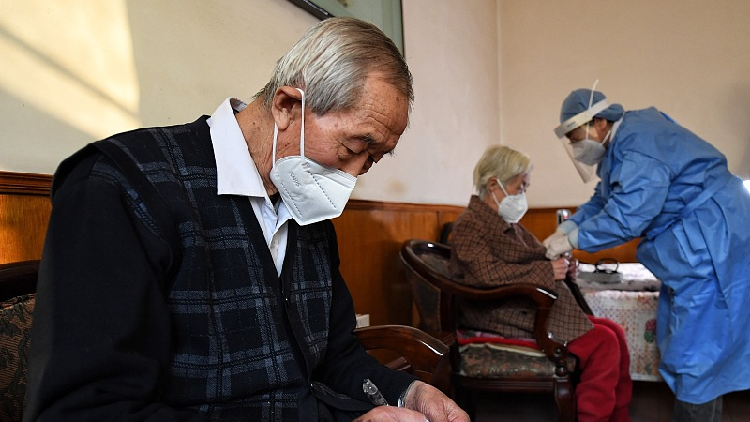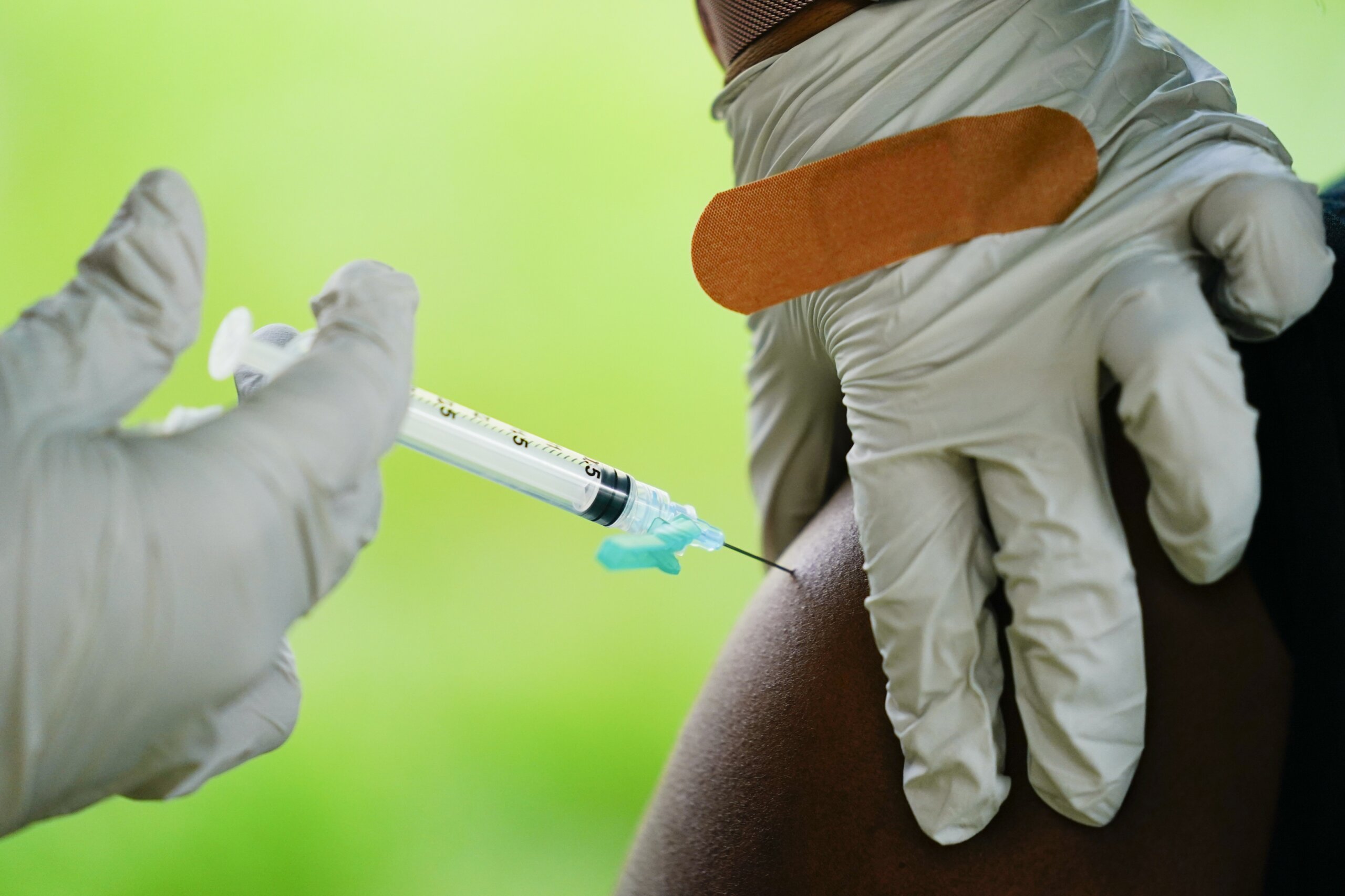COVID in California: 85% of U.S. counties now have low virus levels – San Francisco Chronicle


The latest data from California’s Department of Public Health shows COVID in a holding pattern, with slight week-over-week improvements in key metrics but levels that are still above previous lows. Some jurisdictions, such as Los Angeles County, are retaining limited protections, but Stanford University said it will drop its regular testing requirements. A few encouraging studies: one found that the mental health impacts of the pandemic may not be as bad as feared, while another saw fewer cases of long COVID following omicron infections than from earlier variants. Meanwhile, keep an eye on the animals: scientists have discovered three coronavirus strains in New York rats, and a lion in an Indiana zoo appears to have infected some of its keepers.
John Hopkins updates pandemic dashboard for the last time
On Friday, Johns Hopkins University published the final update to its free COVID-19 dashboard. The researchers announced last month that government sources for real-time tallies had drastically declined, making it difficult to offer accurate reporting on its widely used Coronavirus Resource Center. In the U.S., only New York, Arkansas, and Puerto Rico still publish case and death counts daily. The resource launched in January 2020 and quickly became a vital tool for public health officials, journalists and members of the general public interested in tracking pandemic trends with its real-time data on cases, deaths and hospitalizations.
“After three years of round-the-clock work building and maintaining a 24/7 global resource, we have reached the appropriate time to close this chapter of our response and look to other ways to keep the public safe and informed,” said Lauren Gardner, director of the Johns Hopkins Center for Systems Science and Engineering. “But if we’re needed again, we stand ready and willing to serve.”
The end of the updates comes one day before the three-year anniversary of the World Health Organization’s declaration of COVID-19 as a global health emergency. For now, the death count on the tracker will stand at 6.8 million worldwide.
More than 85% of U.S. counties have low virus levels
About 85.06% of all U.S. counties have low COVID-19 community levels, according to updated figures from the U.S. Centers for Disease Control and Prevention. Another 13.5% have medium levels, and 1.89% rate high. The COVID-19 community levels — determined by the number of new hospital admissions, inpatient beds metrics, and new cases per 100,000 population in the past seven days — have largely leveled off since February. In the Bay Area, all 9 counties in the region remain in the low tier. Based on a separate metric using new cases per 100,000 persons in the past seven days and the percentage of positive tests, Bay Area counties have moderate and substantial virus transmission levels. Once the national public health emergency comes to an end on May 11, the CDC will no longer report community transmission levels due to a lack of regional data.
U.S. cases and deaths fall 40% in a month
U.S. coronavirus cases and COVID-19 deaths dropped 40% over the past month, according to updated figures from the U.S. Centers for Disease Control and Prevention. As of Friday, the nation was averaging about 170,576 new COVID-19 cases per week, based on federal data, down from 284,724 a month ago. About 1,862 Americans are dying each week, compared to 3,113 on Feb. 8. Hospital data shows 2,849 new admissions per day of patients with confirmed COVID-19, compared with the prior seven-day average of 3,264. Approximately 16.2% of the U.S. population — roughly 53.6 million people — eligible for the updated bivalent booster have received the shot.
CDC now tracking XBB1.5.1 virus subvariant offshoot
The Centers for Disease Control and Prevention is now tracking another coronavirus offshoot. The omicron sublineage XBB.1.5.1 was sequenced in about 2% of cases last week, while the agency estimates that the XBB.1.5 omicron subvariant held its dominance in the U.S., making up about 89.5% of COVID-19 cases in the week through March 11 — about the same proportion as last week. The BQ.1.1 and BQ.1 omicron subvariants together accounted for less than 7% of new cases, down from 8.3% on March 4. For the first time since it was detected, XBB.1.5 was sequenced in over 80% of new cases in all regions of the country.
House votes to declassify info about pandemic origins
The House voted unanimously on Friday to declassify U.S. intelligence information about the origins of COVID-19, a sweeping show of bipartisan support near the third anniversary of the start of the deadly pandemic.
The 419-0 vote was final approval of the bill, the Associated Press reports, sending it to President Joe Biden’s desk to be signed into law after the Senate had earlier approved the legislation.
“The American public deserves answers to every aspect of the COVID-19 pandemic,” said Rep. Michael Turner, R-Ohio, the chairman of the House Intelligence Committee. That includes, he said, “how this virus was created and, specifically, whether it was a natural occurrence or was the result of a lab-related event.”
Global cases keep falling but at a slower pace
Global COVID-19 cases declined 58% over the past 28 days, with deaths down 65% over the same period, according to the latest update from the World Health Organization. The pace of falling rates has slowed since late February when the U.N. health agency reported an 89% decrease but remains a promising sign that the pandemic may be winding down as no new variants of concern have emerged behind XBB.1.5, which made up 44.1% of new cases in the latest global survey.
Multiple variants discovered in New York’s rat population
Scientists have detected three coronavirus variants in New York City’s wild rat population. In a survey of the municipal sewer systems, the researchers found that the alpha, delta and omicron variants of the virus were transmitted from humans to rats. The study was published in mBio, an open-access journal of the American Society for Microbiology. “Our findings highlight the need for further monitoring of SARS-CoV-2 in rat populations for potential secondary zoonotic transmission to humans,” said study principal investigator Henry Wan, director of the Center for Influenza and Emerging Infectious Diseases at the University of Missouri, in a press release.
“Overall, our work in this space shows that animals can play a role in pandemics that impact humans, and it’s important that we continue to increase our understanding so we can protect both human and animal health.” The researchers said 16.5% of the rats in their sample group tested positive for the virus and that susceptibility to infection varied by type of variant. “Our findings highlight the need for further monitoring of SARS-CoV-2 in rat populations to determine if the virus is circulating in the animals and evolving into new strains that could pose a risk to humans,” Dr. Wan said.
State COVID metrics remain in holding pattern
California’s pandemic numbers barely budged in the past week but continue to show modest improvement. The health department reported on Thursday an average of 2,612 new daily cases — or about 6.5 per 100,000 residents — as of Mar. 9, compared to 2,760 cases per day, or 6.9 per 100,000 residents the week before. The state’s seven-day rolling coronavirus test positivity rate, which tracks the percentage of lab test results that are positive for the virus, edged down to 5.9% from 6.5%. The daily average of COVID patients in California hospitals fell to 2,375 compared to 2,506 last week, and the number of inpatient beds now in use for COVID-19 patients edged up slightly from 4% the prior week. The state tallied another 216 confirmed COVID-19 deaths this week, bringing the statewide pandemic toll up to 100,640 as of Thursday, with an average of 17 people still dying each day due to the virus. Although California’s COVID-19 state of emergency ended Feb. 28, this marks the fourth consecutive week that the numbers have plateaued at a level public health experts say is still too high to declare the virus vanquished.
L.A. County keeps mask and vaccination requirements for health workers
California will drop COVID-19 mask and vaccination mandates for health care settings on April 3, according to updated guidance released Friday by the state’s health department. But those requirements for workers providing patient care or working in patient care areas will remain in place in Los Angeles County for now. Public Health Director Barbara Ferrer said at a briefing Thursday that she will reassess the policy in September, based on federal health guidance. “The ending of emergency declarations does not mean all protections end,” Ferrer said. The requirements will no longer apply to patients and visitors, and the county will align with the state in dropping the mandates for workers in detention, correctional and adult care facilities. L.A. County will also adopt five-day isolation and quarantine rules starting next week.
Stanford to shut down community testing sites
In a message to the university community, Stanford health officials said that the campus-wide testing program will come to an end in the spring. For faculty, staff, and postdoctoral scholars, Color testing will cease on March 24, at the conclusion of the winter quarter. For students, the program will end on June 18, at the conclusion of the spring quarter. The decision to close the campus test sites was based on recommendations from the Public Health Steering Committee, the university said. Free at-home rapid tests will still be provided to those who need them, along with PCR laboratory tests “in specific circumstances and situations,” according to the memo. Stanford asks that positive results are reported to the school’s health databases. Health officials also reemphasized a “strong recommendation” for masking while in crowded settings.
Risk of long COVID less likely with omicron, study finds
People who were infected with the omicron variant of the coronavirus had substantially lower odds of reporting long COVID symptoms than those infected with the original SARS-CoV-2 strain, according to a study that will be presented in April at the European Congress of Clinical Microbiology and Infectious Diseases.
Swiss researchers found that people who tested positive for COVID-19 during waves of omicron predominance were no more likely to report lingering symptoms after recovering from their infection than people who never contracted COVID-19, reports the journal Infectious Diseases, which got a preview of the study. By comparison, those who were infected with the original wild strain of the virus were 67% more likely to report symptoms up to 18 months after their recovery.
The findings support results from previous studies that suggest omicron infections are less likely to cause long COVID than those from earlier variants.
The study included 1,200 health care workers who tested positive anytime between February 2020 to January 2021, and then got infected again during the omicron wave from January to June 2022. At the end of the study period, the participants answered an online questionnaire about indicators of long COVID such as fatigue, loss of smell or taste, and shortness of breath. Those who tested positive during the omicron wave after being positive with the original virus did not report increased long COVID symptoms compared to people who were infected only with the original virus.
“We can only speculate as to why this was. It’s probably due to a combination of the omicron variant being less likely to cause severe illness than the wild-type virus — we know that long COVID is more common after severe illness — and immunity acquired through previous exposure to the virus through, for example, a subclinical infection without seroconversion,” said co-author Carol Strahm, an infectious disease specialist at Cantonal Hospital St. Gallen in Switzerland.
The researchers also found that vaccine boosters did not appear to cut the risk of long COVID symptoms. “We don’t see that the booster adds much more benefit, at least in terms of long COVID, in our population,” said Kohler.
Mental health impact of pandemic “not statistically significant,” new study claims
The impact of the COVID-19 pandemic on people’s mental health may not be as bad as originally thought, according to new research. In a review of 137 studies from around the world published in the British Medical Journal, researchers at McGill University in Canada found a “minimal” uptick in symptoms among the general population. “Most symptom change estimates for general mental health, anxiety symptoms, and depression…were close to zero and not statistically significant, and significant changes were of minimal to small magnitudes,” they concluded.
The research found that women, older people, and university students saw a small increase in depression symptoms. The review mostly focused on studies conducted in high-income European and Asian countries. It did not include children or marginalized communities. “At a population level, there has been a high level of resilience during COVID-19,” the authors wrote. “And changes in general mental health, anxiety symptoms, and depression symptoms have been minimal to small.”
Other studies, such as one from the Royal College of Psychiatrists have contradicted those findings, noting increases in anxiety, depression, and psychosis related to the pandemic. In a survey of 223,000 students across 20 states, San Francisco organization YouthTruth found that during the 2021-22 school year, nearly 80% of bisexual, gay and lesbian middle schoolers reported depression, stress and anxiety as an obstacle to learning, double the rate of straight students.
The authors of the latest study acknowledged that some symptoms may be coming to the surface now. “The pandemic has affected the lives of many people — and some are now experiencing mental-health difficulties for the first time,” the researchers said. “Governments should continue to ensure that mental health supports are available and respond to population needs.”
In a first, zoo lion infects its keepers
According to a new study, an Indiana zoo lion likely transmitted COVID-19 to its zookeepers, marking the first documented case of animal-to-human transmission of SARS-CoV-2 in a zoo setting. In December 2021, the unidentified African lion, who was 20 years old and required hand feeding by zoo employees at Potawatomi Zoo in South Bend due to its physical limitations, tested positive for SARS-CoV-2 after developing a cough and showing signs of difficulty breathing. Three of the 10 zookeepers in close contact with the animal tested positive within a week. They did not have contact with any other infected humans, and two of the keepers shared a genetically identical strain of the virus with the lion, according to the findings which were published on the preprint database medRxiv.The researchers from the Indiana Department of Health and U.S. Centers for Disease Control and Prevention note that while the risk of transmission from animals is extremely low, it can happen on rare occasions. “Although SARS-CoV-2 is primarily transmitted from person to person, it is considered zoonotic based on natural infections in a range of mammalian species,” the authors wrote.















